Cynthia Barnett
Environmental Journalist-in-Residence at CJC and the Bob Graham Center for Public Service
B.S. Journalism 1989, M.A. in History, 2003, Hall of Fame 2015
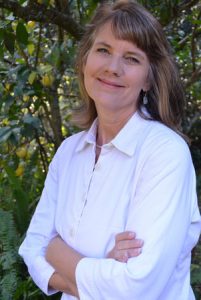
Many people take water for granted. Cynthia Barnett is not one of them. Barnett has written three acclaimed books on water including her latest Rain: A Natural and Cultural History, which uses the weather, a topic we all love to talk about, to tell the sweeping story of climate and its changing rainfall patterns. Rain was long-listed for the National Book Award and named one of the best science books of 2015 by NPR’s Science Friday and others.
Barnett’s work is distinguished by her ability to speak to broad audiences rather than the environmental choir. She also has the marked foresight of a journalist at the top of her specialization. In her first book, Mirage: Florida and the Vanishing Water of the Eastern U.S., she foresaw that the great water wars of the American west would take hold in the east. Mirage, now one of the state’s classic environmental books, was named by the Tampa Bay Times as one of the top 10 books every Floridian should read.
Her second book, Blue Revolution, described a water ethic for the United States. For her latest book project, she is reporting on seashells – using nature’s most beloved object to help readers understand the fragility of life in the oceans. Barnett also writes on water and climate change for National Geographic, The Atlantic, The Los Angeles Times and other outlets.
At CJC, she teaches environmental journalism and oversees student reporting projects such as award-winning Project: Blue Ether and Energy Burden. She also organizes UF’s annual summit on climate change communication.
What inspired you to devote so much of your career to natural Florida, and what keeps you at it decades later despite the ecological loss you’ve seen in that time?
Like many of our students, I have a strong internal sense of justice and an equally strong sense of awe for nature: For Florida’s beaches, rivers, springs, forests and perhaps especially its dramatic skies and great thunderstorms.
As for the ecological losses, when I see a condo tower where a wetland should be or the spreading blue-green algae in the Caloosahatchee River of my childhood, my strongest response is journalistic: Who-what-where-when-WHY did this happen and HOW do we fix it?
What’s your favorite story of how journalism or communications, your work or someone else’s, made a difference on behalf of Florida’s environment?
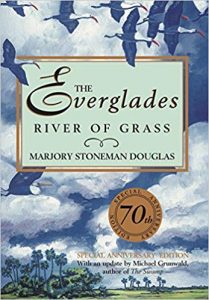 Two mid-20th century books that open CJC’s Environmental Journalism course are Marjory Stoneman Douglas’s The Everglades: River of Grass and Rachel Carson’s Silent Spring. Douglas started out as a Miami Herald reporter and had a long career as a journalist and author before she became an environmental activist at age 76. Before River of Grass in 1947, Americans saw the Everglades – and all swamps – as fetid, scary places that must be drained. Interviewing scientists over some years, Douglas came to understand the ecosystem as vital to the hydrology of South Florida: Absorbing the tremendous rains, filling the aquifer with freshwater. The book and its brilliant river-of-grass metaphor redefined America’s concept of not only the Everglades but swamps generally, creating a new ethos of wetlands protection that endures today.
Two mid-20th century books that open CJC’s Environmental Journalism course are Marjory Stoneman Douglas’s The Everglades: River of Grass and Rachel Carson’s Silent Spring. Douglas started out as a Miami Herald reporter and had a long career as a journalist and author before she became an environmental activist at age 76. Before River of Grass in 1947, Americans saw the Everglades – and all swamps – as fetid, scary places that must be drained. Interviewing scientists over some years, Douglas came to understand the ecosystem as vital to the hydrology of South Florida: Absorbing the tremendous rains, filling the aquifer with freshwater. The book and its brilliant river-of-grass metaphor redefined America’s concept of not only the Everglades but swamps generally, creating a new ethos of wetlands protection that endures today.
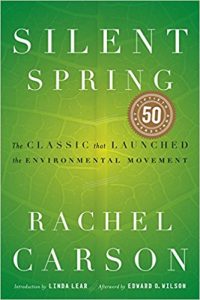 Fifteen years later, Carson’s Silent Spring documented how indiscriminate use of DDT and other pesticides was poisoning America’s birds, fish and other wildlife – and by extension, all of us. So few eagles survived in Florida and around the nation then, Carson wrote that we may need to “find a new national emblem.”
Fifteen years later, Carson’s Silent Spring documented how indiscriminate use of DDT and other pesticides was poisoning America’s birds, fish and other wildlife – and by extension, all of us. So few eagles survived in Florida and around the nation then, Carson wrote that we may need to “find a new national emblem.”
The book’s Florida stories also include a sand-fly eradication effort that dropped a pound per acre of the synthetic chemical dieldrin on a 2,000-acre salt marsh in St. Lucie County. Almost immediately, fish began washing up on shore, creating mounds and mounds of dead mullet and silvery snook – between 20 and 30 tons.
Thanks in large part to Silent Spring, DDT is banned. Dieldrin is banned. From 400 nesting pairs of bald eagles in the early 1960s, today there are more than 15,000 nationwide. Florida is home to one of the largest populations.
Storytelling still makes a difference for Florida’s environment. I see it in my peers’ work, in my own work, in students’ work. I see it every day.
What’s the most critical environmental threat facing Florida, and the most meaningful action the state and its citizens can do to help?
Climate change is the existential threat for Florida and the world, and the most meaningful action is to reduce the carbon emissions warming the planet. As with the earlier shifts away from DDT or mass wetlands drainage, we’re in a surreal period of clinging to a status quo we know to be harmful. Both Douglas and Carson thought a lot about helping their audiences see another, better way – the last chapter of Silent Spring is “The Other Road.” I think about that all the time; how to articulate a vision of a better, gentler way of living.
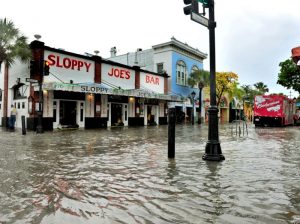 I also want to highlight water. Florida’s defining element has been its most important environmental story ever since our forebears decided to develop a state that was half-submerged. The greatest early impacts of climate change to Florida – the ones we’re living now – all involve water: From sea-level rise to the increasingly intense deluges being brewed up by the warmer atmosphere.
I also want to highlight water. Florida’s defining element has been its most important environmental story ever since our forebears decided to develop a state that was half-submerged. The greatest early impacts of climate change to Florida – the ones we’re living now – all involve water: From sea-level rise to the increasingly intense deluges being brewed up by the warmer atmosphere.
Here are three meaningful actions we can all take on water: Use less. Pollute less. And from our backyards to our cities, make places that leave room for water in nature; preserve the wetlands that hold our freshwaters and keep us safe from floodwaters, leaving greenspaces rather than paving over them so these intense rains can make their way back to the aquifer rather than flooding us out.
What would you advise current CJC students about how/whether their work may help protect Florida’s wild lands, waters and creatures — and all of us?
I think about this work as helping to inspire a new public ethic, an ethos for clean and abundant water and healthy oceans and wildlife populations and the like. These kinds of ethical shifts don’t just happen. As Douglas helped society to value wetlands and Carson to understand how pesticides can kill much more than pests, what’s needed are powerful stories blended with recognizable truths. We saw this play out recently in a single documentary film, Blackfish, which brought an end to captive breeding of orcas.
What is your favorite spot in Florida to embrace its ecological wonders?
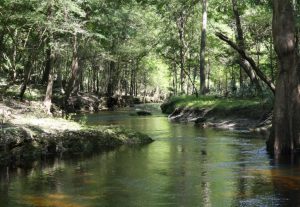 As I’ve visited some of the world’s great rivers that are also the most polluted, such as India’s Ganges, or the most dammed, such as the Colorado, the more I appreciate the ribboning Suwannee River here in North Florida. The least-obstructed major river in the southeast, it is tea-brown not from pollution, but the tannins of decaying plants. My husband and I love to pack our camping stuff in canoes and take our kids on the river overnight. We stay in the river camps that are part of the Suwannee River Wilderness Trail. The kids are always transformed by the wide river and its limestone crags, huge Cypress trees, rope swings and white-sand beaches that they have tumbled, rolled and slid down since they were very small. The night is lit by stars and campfire rather than our typical too-many screens.
As I’ve visited some of the world’s great rivers that are also the most polluted, such as India’s Ganges, or the most dammed, such as the Colorado, the more I appreciate the ribboning Suwannee River here in North Florida. The least-obstructed major river in the southeast, it is tea-brown not from pollution, but the tannins of decaying plants. My husband and I love to pack our camping stuff in canoes and take our kids on the river overnight. We stay in the river camps that are part of the Suwannee River Wilderness Trail. The kids are always transformed by the wide river and its limestone crags, huge Cypress trees, rope swings and white-sand beaches that they have tumbled, rolled and slid down since they were very small. The night is lit by stars and campfire rather than our typical too-many screens.
This is the final not-so-secret ingredient in the work of environmental and science journalism: Finding the wonder – and sharing it with others.
